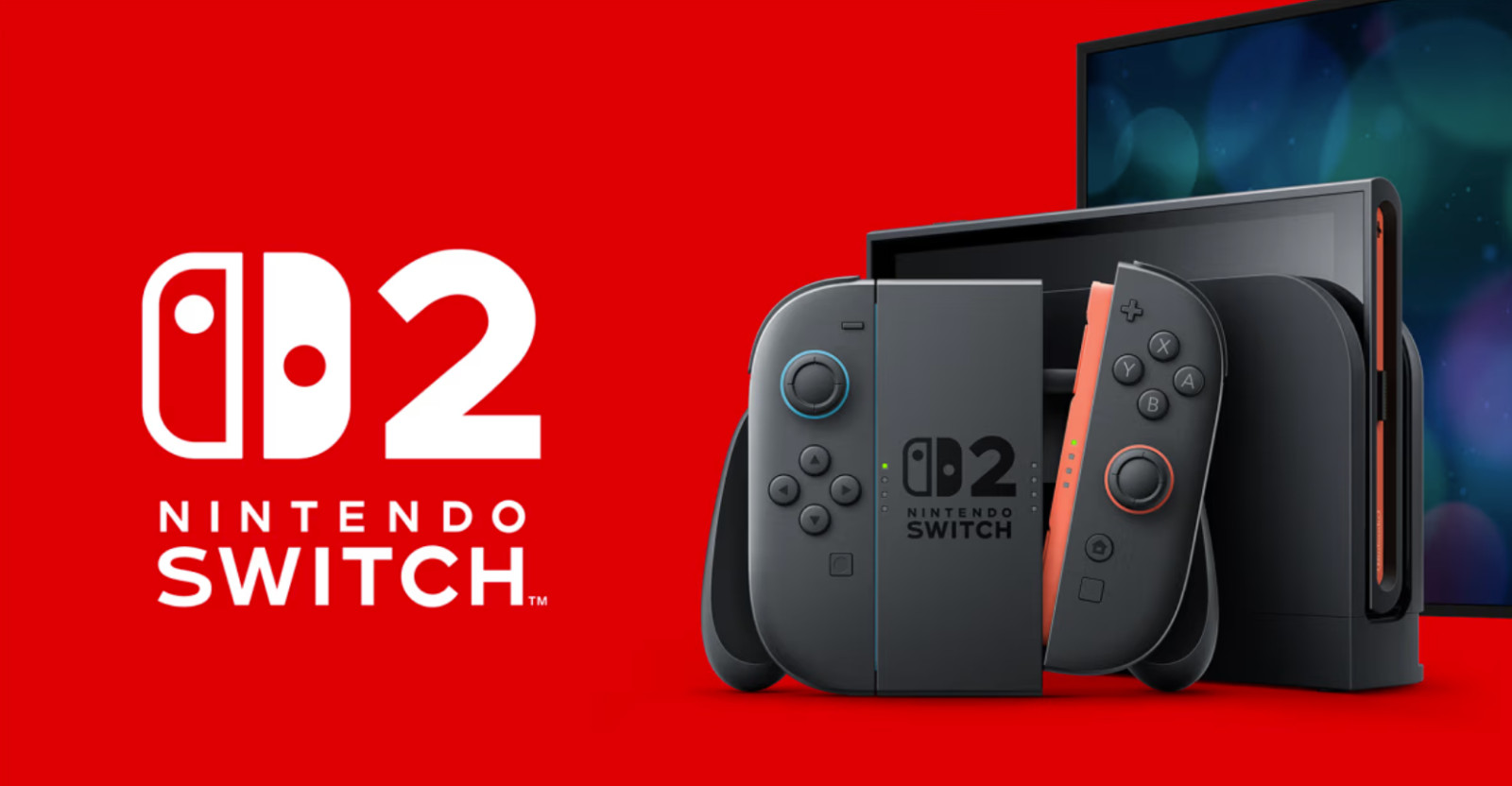Switch 2 FAQs: Your cheat sheet for understanding Nintendo's upcoming console


As we said in our games trends to watch article, 2025 will be the year of the portable. Nintendo kicked that off in earnest, finally lifting the curtain on its Switch 2 console. Here are the basics:
- The Switch 2 seems iterative – a bigger, better Switch with some quality-of-life improvements
- It is coming out in 2025
- It plays Switch 1 games too, both physical and digital
- Nintendo will announce its software lineup on April 2, 2025
- It will hold several in-person events across North America, Europe, Oceania, and Asia to build fandom and let fans go hands-on
Our clients and the press have been sending us plenty of questions, so we decided to answer the most frequently asked here.
Is “Switch 2” the right name for this product?
The product’s straightforward name of “Switch 2” is without a doubt the right choice.
Nintendo learned a hard lesson from the Wii U’s confusing naming convention and the abject failure of that console.
Many consumers – not just casual but core ones too – thought the Wii U was an add-on for the Wii, similar to accessories like the Wii Fit Balance Board and Wii Motion Plus.
This marketing fumble almost destroyed the gains Nintendo made with the cultural phenomenon that was the Wii, showing that sometimes it pays for branding to be functional – not just cute.
Now that Nintendo has all its console eggs in the Switch basket, and is not split between its home and portable consoles, it simply cannot risk confusing fans.
Are the Switch 2's seemingly small improvements enough to attract players?
As we told IGN, Nintendo’s cross-entertainment efforts across film, theme parks, toys, music, and even alarm clocks all lead back to its core console brand.If the beating heart of the brand fails, everything falls apart.
It makes sense for Nintendo to iterate on what works. Nintendo’s unique value proposition is its IP and brand power – Mario, Pokémon, Zelda, and the like.
These Nintendo IPs are some of the strongest in the world. Even the power of Pokémon alone shouldn’t be taken lightly – nor should Nintendo’s cross-generational reputation as an entry point for new gamers with games like Mario Kart.
Younger players inherit their parents' Nintendo nostalgia, and the Disney-like cycle continues.
The inevitable announcement of a sequel to 2020's Animal Crossing: New Horizons, which has sold over 45 million copies, will mobilise the cosy gamers scene in full force.
That said, the reveal trailer has not shown us everything, as there is some rumoured mouse functionality that – knowing Nintendo – could actually lead to some innovative control changes.
How can Nintendo succeed with Switch 2 software?
Nintendo confirmed that it will release Switch 2-exclusive games. Mario Kart 8 Deluxe has sold over 64 million copies, so making Mario Kart 9 a Switch 2 exclusive would bring consumers to the new machine in full force. The same goes for the next mainline Pokemon, which is expected to launch in 2026.
Based on the development timelines of Nintendo’s internal studios, it seems Nintendo has been sitting on a goldmine of titles to launch during the Switch 2’s launch window.
Alongside Mario Kart, we expect to see a new 3D Mario platformer, an upgraded Pokémon, and likely some other surprises in year one. Nintendo will pull out all the stops.
Featured Report
Podcasts as a key information source Implications for media companies
Podcasts have begun to rival traditional media as a key source of news and political information for podcast listeners, especially among millennials and Gen Z. To stay relevant, traditional media must...
Find out more…Backwards compatibility with the older Switch games is important too. Gamers – and especially younger ones – have come to expect this. Nintendo would not want to alienate fans here.
Except for Ubisoft, many third-party publishers were late to the party with the original Switch, scared off by the Wii U’s underperformance. Things will be different for the Switch 2, and third parties will get in on the ground floor.
It will be an opportunity for EA, Ubisoft, and the like to extend the product life cycles of their older PS4- and Xbox One-era games.
Speaking of which, Microsoft and even Sony have been launching more games on the Switch. We expect this will ramp up on the Switch 2 as PlayStation and Xbox continue their off-platform strategies. We expect to see Halo on the Switch 2 eventually, as well as other games from Xbox and PlayStation.
Developers are already building lower-fildelity versions of their games for the Xbox Series S and lower-end PCs. It could be a perfect storm.
The Switch 2 could eventually offer an all-in-one third-party development device – one with PC games (mouse functionality), Xbox games, PlayStation games, and – of course – Nintendo games.
Can Nintendo cater to core gamers with the Switch 2?
Core gamers are harder to please than more casual gamers and the mass market. Other portable companion devices like the Steam Deck and the ROG Ally likely have more processing power than the Switch 2, and core gamers will draw these comparisons.
Learn more about portable companion devices.
We expect many of these vocal-minority gamers will buy the Switch 2 nonetheless. And they are not even Nintendo’s main target audience here – families and more casual players are.
Nintendo has been quiet about the fan-favourite Metroid Prime 4, which is a niche series relative to Nintendo’s other properties but would attract some core gamers.
The Pokémon scene would find a faster-running version of Pokémon Legends: Z-A enticing, as framerate and performance issues seen in the Switch’s more recent Pokémon games have been a major pain point for that scene.
Will the Switch 2 outpace the original Switch?
It will be a challenge for the Switch 2 to outsell the original Switch, as pandemic-fuelled engagement is a hard black-swan act to follow. The Switch 2's success all hinges on content cadence, how well Nintendo markets to casual audiences, and pricing.
If Nintendo’s Switch 2 is significantly more expensive, that could limit it in today’s economy. Supply might also be an issue, as the whole tech industry is fighting for fabricator space.
The original Switch will keep selling as a budget entry point for Nintendo-hungry gamers. Nintendo is known to not reduce the price of its first-party games on older platforms, so it will still get ongoing revenues there.
When will the Switch 2 launch?
We are expecting a late Q2 / early Q3 2025 launch, letting Nintendo ramp up its marketing – and word of mouth – into the holiday season.
How much will the Switch 2 cost?
Under $400 is the sweet spot for mass-market adoption, but it might launch at $499 (or more), depending on supply, how powerful the console is, and how much it actually costs to make.
If the Switch 2 is supply-constrained at launch, Nintendo could charge more. Early adopters would be willing to pay for it either way. Nintendo might not be willing to risk sticker shock, though.
Tariffs could also drive up costs in the US, where the president has already passed new laws pointing to such.
Nintendo, unlike the other platform holders, almost wholly relies on its games business, so it cannot as easily take big loss-leading risks on pricing compared to Sony and Microsoft, which are conglomerates.
Are there opportunities for non-gaming entertainment companies?
Not directly, but there are some longer-term cross-entertainment implications.
Nintendo’s approach to IP is famously guarded, but the Switch proved how the right platform can transform franchises into cultural phenomena.
The numbers speak for themselves:
- Switch 1 Legend of Zelda games Breath of the Wild and its sequel, Tears of the Kingdom, sold over 33 million and 20 million copies, respectively
- No Zelda game before the Switch sold over 9 million units
- This points to a long-term opportunity for film and TV companies
If Nintendo uses the Switch 2 to elevate (niche) franchises in a similar way it did with Zelda, Animal Crossing (a series that became a global sensation after Switch), and Splatoon, it could open doors for Hollywood and streaming platforms.
IP like Metroid, Xenoblade, and Pikmin were always beloved by smaller audiences and have already began building more traction on the original Switch. The Switch 2 could push them to a new tier – one more ripe for silver-screen, streaming, and series success (on a smaller level than Mario, of course).
High-quality fantasy and sci-fi adaptations – as well as anime art styles – tend to land with consumers. A Switch 2-driven rise in popularity for these IPs could create openings for video adaptations.
Music companies can indirectly ride the Switch 2 wave, too.
The Super Mario Bros. Movie, which grossed over $1.3 billion at the box office didn’t just rely on Nintendo’s rich musical legacy. It also leveraged popular licensed tracks to amplify its mainstream appeal:
- ‘No Sleep Till Brooklyn’ – Beastie Boys
- ‘Mr. Blue Sky’ – Electric Light Orchestra
- ‘Take On Me’ – A-ha
- ‘Thunderstruck’ – AC/DC
Future adaptations of Nintendo properties, whether on screen or in advertising campaigns tied to the Switch 2, might take a similar approach.
The right song placement in game adaptations can give older songs new life and drive spikes in streaming numbers. Labels that partner with Nintendo-adjacent projects could benefit.
Curious about how the Switch 2 will impact game revenues next year? Look no further than our 2025-2031 games market forecast. Reach out here to get it first.

There is a comment on this post, add your opinion.